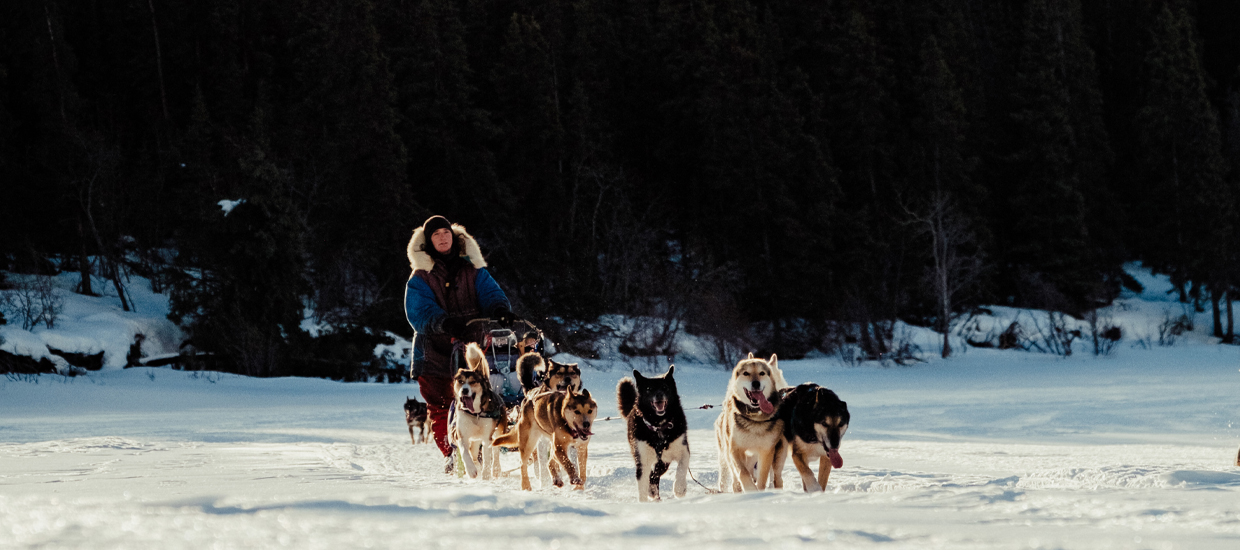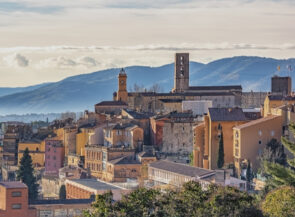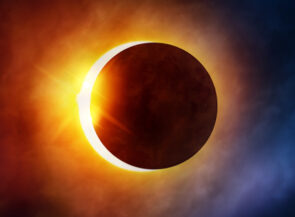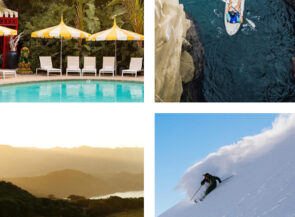On a trip to Canada’s Yukon Territory, a writer learns to see his life in a new light
A four-legged beast rushes by me. I tell myself it’s a black fox. More importantly, I tell myself there is absolutely zero chance it’s a wolf. I have a weak heart, and my doctors recommend keeping my life’s fox-to-wolf ratio strictly in favor of Team Fox. So it is definitely a black fox, I repeat to myself, as I strap into my snowshoes.
It’s midnight, the ideal time to start a snowshoe trek across a frozen lake to then hike up a hilly island—ideal, that is, if you’re hoping to see the aurora borealis, the northern lights, which I’ve recently upgraded from my bucket list to my higher-priority to-do list. This is the reason I’ve come to Whitehorse, the capital city—capital village is more like it (in a good way!)—of Canada’s Yukon Territory, Alaska’s neighbor to the east.
Here I will warn you that my bucket list is a bit cursed. Yes, I’ve been to Machu Picchu—but I got altitude sickness and threw up all over those Incan ruins. Yes, I’ve seen the Mona Lisa at the Louvre, but only briefly, before a bomb threat evacuated the museum. Yes, I’ve walked the Great Wall of China, but I lost my camera. And, yes, I’ve seen the Hagia Sophia, but it was so hot in Istanbul that my passport got steam-warped by the heat, and I needed to get special diplomatic permission to fly home. But that was all pre-pandemic. It’s a new world now, and maybe I can be a new me.
The new me wears snowshoes, apparently. I trudge onto the lake, taking up the distant rear in my tour group with Terra Riders, because I’m not kidding about that weak heart: hypertrophic cardiomyopathy. Long story short: My heart is literally too big, awwww. Long story slightly less short: I’m slow and cautious in the outdoors. It’s not that I’m not adventurous—I just prefer my sense of adventure to be channeled into something like a blind date or a sample taste of a bizarre ice cream.
Fortune favors the bold, though: Lake Laberge at midnight, under the moonlight, is beautiful. The landscape is so open, unfolding before me like a blank canvas, inviting me to be just as full of possibility myself.
We trek. We hike. We set up two little campsites (one for the fire, the other for sitting with hot chocolate and skygazing away from the firelight) and wait for the big show. Then we wait some more. And then, suddenly, the most believable of plot twists: even more waiting. Around 2 a.m., we trudge back. No go. But it’s fine. We have a few more nights. Plenty of opportunities.
A strange aspect of a vacation built around a nighttime activity is the need to fill your days. I like to think that my friends are too intimidated by my Scrabble skills to plan any indoor activities—too much of a home-field advantage for me—but I’m not ready for what they actually do have in store. As I slink in sleepy stupor to my room at the Raven Inn after returning from the Not-There Lights, a friend gives me an ominous goodnight: “Rest up! We have a big day tomorrow!”

Our first daytime activity gets off to a flying start—literally, as I’m being tasked with piloting a plane. Fine, co-piloting. Fiiiiiiine, holding the copilot controls while the for-real pilot with Rocking Star Adventures does all the work. We hop into the cockpit of a Cessna 206, watch the propeller whirl in front of us, and soar into the sky above the wilderness of the Kaskawulsh Glacier and Kluane Icefields, in Kluane National Park and Reserve, which is co-managed by Parks Canada and the Aishihik, Champagne, and Kluane First Nations bands.
Even as a devout science-fiction fan, I can sincerely say that the flight is an otherworldly experience: mountain after mountain completely untouched by civilization. Raw. Natural. Beautiful. I am reminded of Enceladus, Saturn’s icy moon. We don’t fly over these mountains; we fly around them, in between them, in awe of them—especially Mount Logan, Canada’s highest peak, which climbs to nearly 20,000 feet above sea level. The park by itself is half the size of Switzerland. “It’s like the Alps,” says our for-real pilot, “without any towns.”
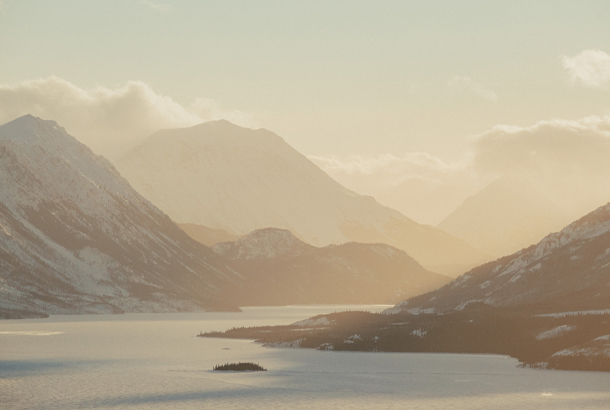
Again, there is a surreal openness to it all. Not just open terrain or open arms, but the open-endedness of a choose-your-own-adventure book, an openness to the range of choices offered by a destination that lacks insistence. There is no sense of obligation in the Yukon, no sense of being herded through the 31 Must-Do Yukon Activities. I’ve done those elsewhere, and you always just end up, y’know, wondering why exactly you were so motivated to eat a deep-dish pizza in Chicago or bet it all on red at the craps table in Las Vegas or swim with pigs in the Bahamas. After about an hour of out-in-the-open flying, we land not on an airstrip but the frozen Tagish Lake, beside the South-ern Lakes Resort, where our cabins have floor-to-ceiling windows showcasing the epic vistas. Fir branches are strewn along the lake’s snow-covered surface, as if Martha Stewart had figured out a fun new use for wreath leftovers.
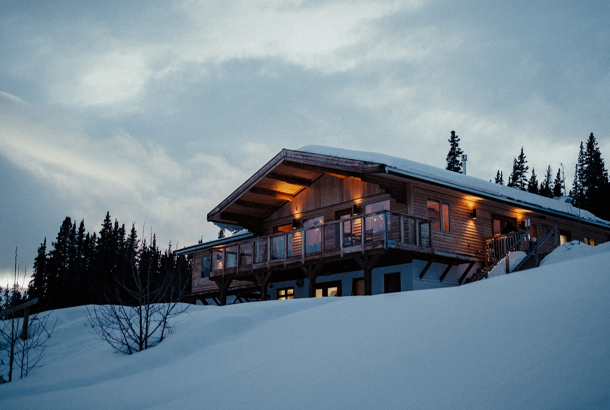
That night, we trek out onto the frozen lake once more. I lie flat and make a snow angel, hoping it’ll be a good luck charm. I want so badly to see the lights that there are a few moments when I trick myself. There they are! No, that’s just a moonlit cloud. Oh wait, what’s that over there? The lights? No, it’s just a bright tendril of Milky Way. Ugh. Dumb galaxy, getting in the way of my bucket list.
“Come out! Come out! Wherever you are!” I jokingly scream into the sky, followed by a less joking “please.” Alas, a second night of nothing. The only silver lining I can see is that this is how all good stories go: The punchline or the big reveal or the fairy-tale change of circumstance always happens on the third night.
With a new day comes another uncharacteristic (for me) adventure: snowmobiling. Jetting across the lake and through the woods at upward of 100 miles per hour, I sing nostalgic TV theme songs loudly—Why not? Only I can hear them!—to keep calm. “Show me that smile again!/Don’t waste another minute on your crying!” Once I get past 30 or 40 miles an hour, I realize everything around me is snow. It shreds and rains in our wake like lawnmower debris. Suddenly my surroundings feel less like a winter wonderland and more like a welcoming pile of autumn leaves, waiting to be played with. I get into it, revving through figure eights and even standing while driving a bit. (Editor’s note: Don’t try this!)
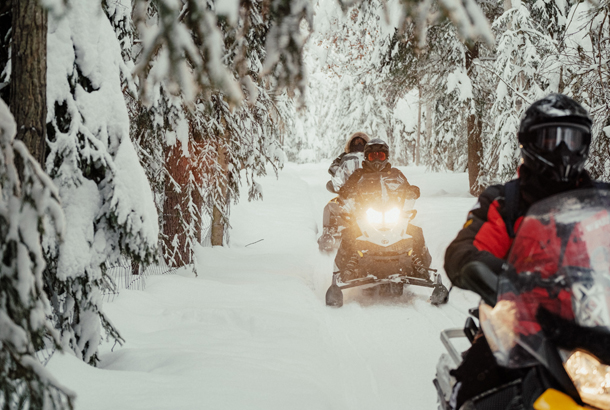
I marvel at how sunny it can be in the Arctic. How the light glitters and glimmers off ice crystals and snowflakes, making a jewelry case, a silent disco whose tempo increases with every rev of the engine. Eighty, 90, 100 miles an hour. I wonder, if no two snowflakes are alike, does that mean that no two glints are alike either?
We stop at an outlook that offers such a glorious view of forest and mountain that I find myself humbled to be taking in so much of a world I haven’t realized I’ve been missing out on. I’m so caught up in the sunset’s beauty that I almost forget that a setting sun means the coming of night—and a third-time’s-the-charm crack at seeing the elusive aurora.
Word of the rule of threes, however, has not yet reached this untouched land. For the third time, I’m unable to cross off my bucket-list item. Is it fourth-time’s-the-charm here? Is that what happens when American luck is converted to the metric system? In fairness, the colorful phenomenon is essentially an act of serendipitous weather—albeit on a cosmic level. Clear skies and strong solar winds washing over the planet’s magnetic fields are both necessary. Like a rainbow, it’s not a sure thing. Even reliable atmospherics, like a sunset or a meteor shower, can some-times disappoint. Night after night, I am questing for the lights and returning with nothing to show for it. The snow-white surroundings mirror the inner blankness I feel. I’ve come all this way… for what, exactly?
And yet, if the centerpiece of my vacation has been a bust, why do I also feel so happy, so excited and fulfilled? I am flummoxed. I am heartbroken. Then it comes to me: I’ve also been set free.
I had wanted a vacation so badly. Needed one. The pandemic has been so stressful and such a reminder of how tomorrows are never promised that I decided if I was going to be taken out by COVID or monkeypox or murder hornets, I needed to go out with a full life under my belt. And what I really needed, I realize now, was a vacation not just from my routine, but from myself.
That’s where my excitement and fulfillment has come from: With each of these daytime activities, I am unintentionally short-circuiting the spirals of my mind, overwhelming them with the shock of survival, baptizing my brain as born-again in a flood of adrenaline. It’s with genuine glee, then, that I ask my friend Liz what’s next. She shows me a smile that’s enormous even by Canadian standards. “Dogsledding!” she cheers.
Oh no. No, no, no.
“I’m not a dog person,” I tell her with equal doses of authority and timidity. Liz huffs and puffs and blows my ego down. “Not a dog person!” she cries. “What does that even mean?”
The phrase rattles in my head. This is the umpteenth time I’ve said it. It’s a normal thing to say. People say it all the time. And yet, here and now, it sounds so silly. I’m not a dog person? Am I a land-a-plane-on-a-frozen-lake person? Am I a snowmobile person? Am I a midnight snowshoe person? Not. At. All. And yet here I am, doing all those things. Doing them and liking them. I have been all those people. And now, here I am anew: a dogsledding person, if not a dog person.
My dogsledding excursion with Tagish Lake Kennel is too quiet for belting out TV theme songs, so I try an old-school technique: fake it till ya make it. I pet a dog’s back. Then its head. Then behind its ears. Then another’s. And another’s. Soon I am hugging them all. Wagging my tongue in synchronized panting. Commanding them to get information and then to race ahead. Even dropping to the frozen ground to nap with them when we take a break for a campfire lunch and hot chocolate revival. It turns out Liz is right; I am a dog person.
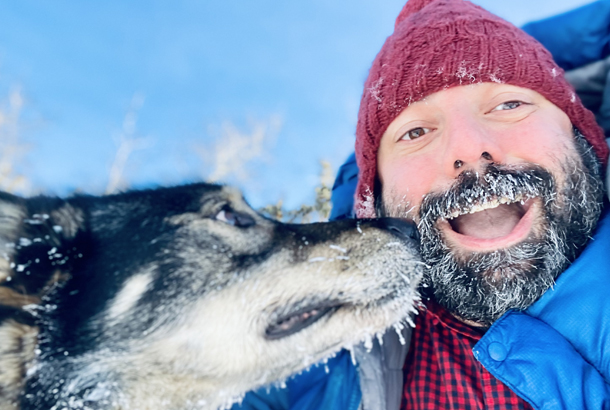
I am, in this moment, something better than cozy. Better than relaxed. Better, even, than happy. The white canvas of snow all around me no longer feels blank. It feels ready.
I am not who I hoped to be at the end of this vacation, which was just the old me with new photos. Instead, I am someone else: still me, but the me who exists on the other side of fearing wolves, the other side of 100 mph adventure, the other side of openness. I know my heart can handle it.
Next Up: Free Rein: A “Horse Crazy” Author Takes the Ride of Her Life through Iceland
